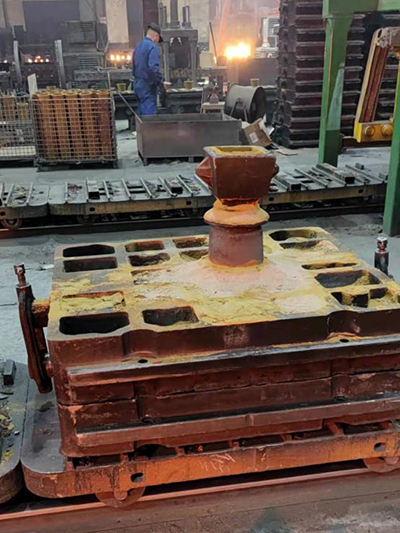3D Printed Sand Casting Revolutionizing the Manufacturing Industry
In recent years, the manufacturing sector has seen tremendous innovations driven by advancements in technology. Among these, 3D printed sand casting has emerged as a groundbreaking technique that promises to transform traditional casting methods. This innovative approach combines the principles of 3D printing with sand casting, enabling faster production times, greater design flexibility, and reduced material waste.
Understanding 3D Printed Sand Casting
At its core, 3D printed sand casting employs a process where sand molds are created using additive manufacturing techniques. Traditionally, sand casting involves creating a pattern, usually made from metal or plastic, which is used to form the mold in which molten metal is poured to produce the desired shape. However, this method can be time-consuming and labor-intensive, often requiring several steps and the use of additional materials.
With 3D printed sand casting, manufacturers use a 3D printer to directly fabricate the sand molds from a digital model. The printer deposits layers of sand, bonding them together with a binder, to create intricate molds that can accurately represent complex designs. This approach not only streamlines the production process but also allows for the creation of lightweight and intricate geometries that would be difficult or impossible to achieve with traditional casting methods.
Advantages of 3D Printed Sand Casting
1. Speed and Efficiency One of the most significant benefits of 3D printed sand casting is the drastic reduction in lead times. Traditional mold making can take days or even weeks, while a 3D printed mold can often be produced in just a few hours. This efficiency enables rapid prototyping and quicker turnaround on production runs, which is crucial in today’s fast-paced market.
3d printed sand casting

2. Design Flexibility The additive nature of 3D printing allows for unparalleled flexibility in design. Engineers and designers can create highly complex geometries that would be impractical with conventional casting methods. Features such as internal channels and lattice structures can be seamlessly integrated into the mold, enhancing performance and reducing weight in the final product.
3. Material Conservation 3D printed sand casting minimizes material waste compared to traditional methods. As the molds are created based directly on the digital model, excess material generation is significantly reduced. This not only leads to cost savings but also aligns with modern sustainability practices, as manufacturers strive to minimize their ecological footprint.
4. Customization In industries such as aerospace and automotive, customization is becoming increasingly important. 3D printed sand casting allows manufacturers to easily produce small batches of customized parts without the need for expensive and time-consuming adjustments to traditional tooling.
Challenges and Future Outlook
Despite its numerous advantages, the adoption of 3D printed sand casting is not without its challenges. High initial equipment costs and the need for skilled personnel can be barriers for smaller companies. Furthermore, developing reliable post-processing techniques for the final cast parts is essential for ensuring quality and consistency.
Looking ahead, as technology continues to advance and costs decrease, it is expected that 3D printed sand casting will become more prevalent across various industries. Research and development efforts are underway to refine the processes and materials used in this innovative casting method, paving the way for future applications.
In conclusion, 3D printed sand casting is revolutionizing the manufacturing landscape, offering a suite of benefits that traditional casting methods cannot match. As industries continue to seek increased efficiency, reduced waste, and greater design freedom, this cutting-edge technique is poised to play a pivotal role in the future of production.
Post time:វិច្ឆិកា . 27, 2024 02:20
Next:Innovative Techniques in 3D Printing for Sand Casting Applications
